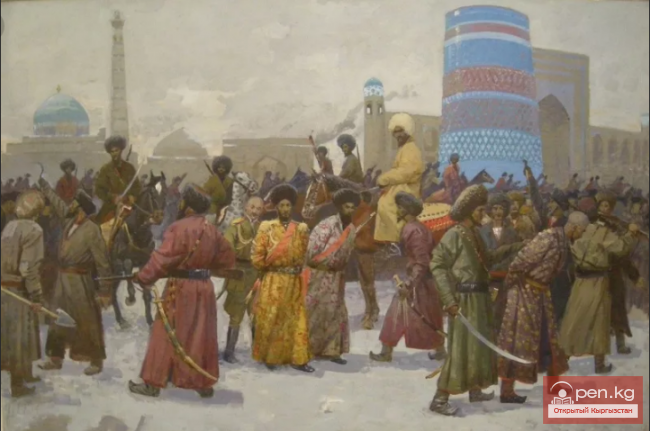Construction of the New Part of the City
In 1872, the source of headaches for Russian diplomacy, the Kokand Khanate, ceased to exist.
On its territory, the Fergana region of the Turkestan General Governorship was formed. The triumph of M.D. Skobeleva in southern Kyrgyzstan did not go unnoticed by the local residents. Having relatively quickly recovered from the shocks of war, they soon felt many advantages of being subjects of a vast empire, living on its outskirts, but what an outskirts it was! Russian Turkestan in all its Asian-Russian splendor. The city of Osh was envisioned as the center of this luxurious province - this crossroads of ancient caravan trails of the Great Silk Road.
The "Southern Capital" was to become one of Russia's main eastern strongholds, its outpost in the southeast. It was no coincidence that the route of the 4th Linear Turkestan Battalion, which set out from Tashkent in January 1875, passed through here. The unit was part of the Namangan detachment of Colonel Skobeleva, who soon became a major general. It successively occupied the cities of Kokand and Margilan, and on March 10, 1876, it entered Osh.
At that time, the battalion did not participate in military actions, as the units of the Namangan detachment were ahead of it.
Here, in the "southern capital," the battalion's last stop and headquarters were established, as the soldiers spent the winter of 1875-1876 under the open sky. According to the battalion's historian V.N. Zaytsev, the area was chosen well: it "had a wonderful climate and a good location at the foothills of Alai and good water from the Ak-Buura River, where a new 'Russian city' was to be built above the old city." By the way, it was the ninth city founded and arranged by the soldiers of the battalion in Central Asia. The city of Osh became the district center of the Fergana region, with Major Ionov appointed as its chief. Here, as in the regional and provincial centers, the imperial authorities decided to establish a new "Russian city" south of the existing old Osh, upstream along the Ak-Buura River. The first builders and residents were ordinary Russian soldiers. In fact, starting from March 10, 1876, throughout the spring and summer, the personnel of the 4th battalion built barracks, warehouses, and new houses.
The construction of the new part of the city was led by sapper captain Modest Petrovich Rezvoy, who later strengthened the border outposts and posts in the restless Pamir-Alai region. Directly involved in its planning, construction, and initial improvement of the new district center were the first commander of the garrison, staff captain Sergey Andreevich Topornin, and the first district chief of Osh, M.E. Ionov.
Unlike the ancient Uzgen and the well-known "holy" attractions of Jalal-Abad, by 1917, Osh had undergone significant changes: it expanded territorially, its population increased significantly, and the composition of its residents changed. But, as before, the more populated areas remained in the old city near trade and cult sites, while the city outskirts were less inhabited, sometimes (especially along the roads leading to the city) transitioning into dense gardens, fields, and grazing pastures for livestock.
The Bukhara Invasion of Fergana in the Early 1840s










































